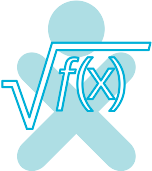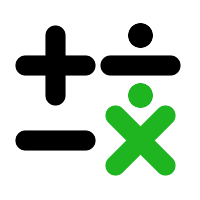Math
Health | Literacy | Math | Music | Biology | Chemistry -
Welcome to the OLPC Math portal. Mathematics is a core element of education, from basic numeracy through more complex calculation. Mathematical thinking can also be integrated with other disciplines, such as art, music, and science.
The following information discusses math-related projects associated with the XO, including software, hardware, and content.
Getting involved
We are always interested in getting in touch and collaborating with people who share our passion with maths. Through this portal people passionate about education and maths can share their knowledge on relevant issues.
If you are interested in getting involved with OLPC and its related math projects, take the initiative and include yourself in the list of the people sharing your natural inclination and dedication to the science:
People
- Andriani
- Sj
- Tom Schum
- Eli Lebow
- Kate
- Kevin Driscoll
- joshua gay
- Thomas Okken
- Zachary C. Clifton
Projects
Calculation
- A basic and well-sugarized calculator, thanks to rph and others : calculate
- A programmable scientific calculator, emulating an older handheld, care of Tom Schum: Calc-42S
Recent updates
Please, include in this section any known recent updates regarding the math related projects of OLPC.
Math teams
Problem solving
Joshua Gay and Kevin Driscoll are working on pulling together a set of math contest problems for elementary and middle school, to seed flash cards and local contests and to encourage problem-writers of all ages to create their own.
Software for mathematics
Software activities for the XO
- Calculate: The Calculate activity provides a generic calculator, both simple to use for the youngest children, but able to support more complicate math and variables. It comes bundled with the XOs. Its goal is to teach children some math and provide them with a functional tool easy to use.
Math notation
- Unicode includes about 2,000 math and physics symbols, many from preexisting character set standards, APL, and TeX, and many more from a project of the American Mathematical Society.
- Word processors such as Microsoft Word and OpenOffice Write, and publishing software such as TeX and FrameMaker, provide two general methods for composing mathematical formulae. One is to pick elements from menus and palettes, and place them visually, and the other is to enter codes such as \pi r^2 (area of a circle). Here the code \pi stands for a Greek letter, and the symbol ^ stands for superscript position.
- Another encoding for mathematics is MathML, a version of XML intended to make equations and other formulae display correctly on Web pages.
Math notation owes much to mathematicians in India and the Muslim world (Hindu-Arabic numerals, zero, and place notation). The great flowering of math symbols occurred in Europe after 1600. Although the relative merits of alphabets and logograms (Chinese, cuneiforms, and hieroglyphs) have been hotly debated, mathematicians are firmly on the side of both.
Handwritten equations
Some of the software resources available for mathematical equations are the following:
- JIMHR is a combination of FFES and Natural Log. All FOSS. Related: rlaz
- JMathNotes is another system. FOSS.
External links
Below you can find a number of useful websites:
- Art of Problem Solving - math puzzles online
- Yudit Unicode text editor

